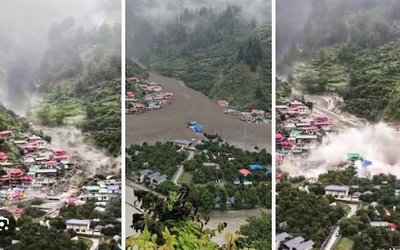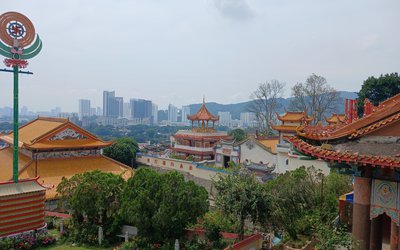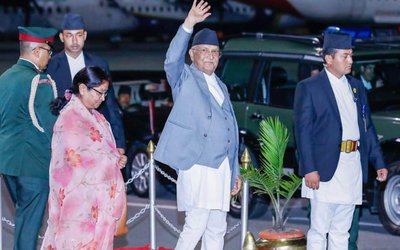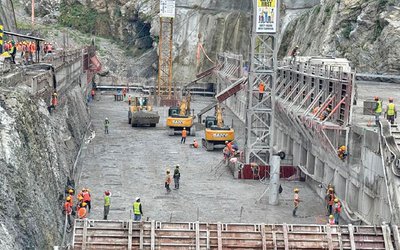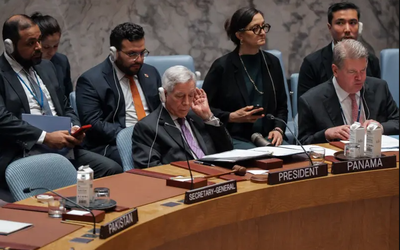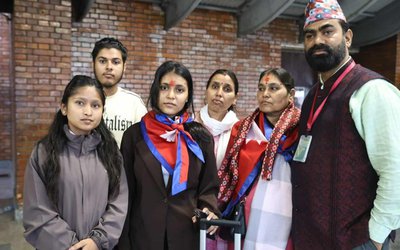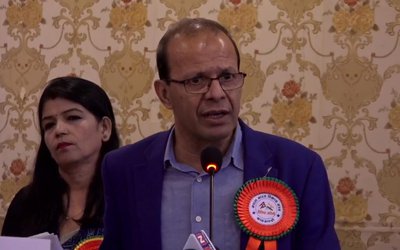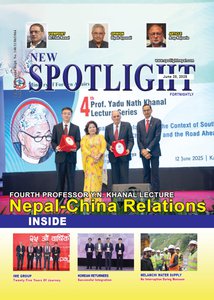
Vanishing commitment
For decades, across Asia and the Pacific, development aid functioned as a vital bridge connecting communities facing crisis with the hope of recovery, opportunity, and long-term stability. Aid was more than financial transfers; it represented a shared global promise to stand with those in need. Today, that promise is fading. In 2025, humanitarian aid from OECD countries dropped by nearly 10%, marking the first overall decline in development assistance in five years (The New Humanitarian, 2025). This contraction is more than a budgetary statistic—it signals a troubling shift in priorities. The ripple effects have been immediate and alarming. Programs once central to food security, maternal health, and climate resilience are vanishing. Community-led initiatives are being shelved. Strategic partnerships, built over years of shared learning, are faltering. And frontline actors—those closest to the crisis—are being left without the resources, support, or solidarity they urgently need. This erosion of aid is not just a funding gap; it is a retreat from responsibility at a time when the region faces mounting shocks from intensifying climate disasters to deepening inequalities. If this decline in commitment continues unchecked, the hard-won development gains of recent decades risk being undone, leaving millions in the lurch.
The decrease in development aid is not just a story about declining budgets; it’s a story about real people and real consequences. When the lifeline of development aid begins to shrink, the fallout is immediate, far-reaching, and often irreversible. In a region grappling with multiple, compounding crises from rising sea levels and extreme weather to widening inequality and increasing political instability, funding cuts don’t just reduce program reach; they directly impact survival. Any drop in development aid mean more malnourished children, the collapse of women-led initiatives, and a rise in preventable deaths. To avoid such devastating consequences is why the debate around aid must urgently return to what matters most: the lives, dignity, and futures of those for whom aid is not a supplement but an existential necessity. At stake is not only the stability of vulnerable communities but the credibility of the global commitment to leave no one behind.
Understanding the trimming down of development aid
The trajectory of official development assistance (ODA) is increasingly worrying. While headline figures suggest generosity—aid reached a record $223.7 billion in 2023—much of this total was absorbed by in-donor refugee costs instead of being disseminated to communities in need across the globe (OECD, 2024). Beneath the surface, the reality is stark: actual funding for external development programming is shrinking. This global reallocation has hit Asia and the Pacific particularly hard. Countries already facing deep fragility such as Afghanistan, Myanmar, and the Solomon Islands are witnessing a steady withdrawal of donor support (Oxfam, 2024; CGD, 2024). Essential investments in governance, livelihoods, peace-building, and climate adaptation are being scaled back just when these nations can least afford to lose aid. The decline isn’t just numerical—it signals a troubling erosion of long-term development commitments when they are most needed.
The retreat from long-term development financing reflects more than just fiscal constraint; it marks a deep geopolitical shift. Major donors are increasingly aligning aid with domestic political agendas and strategic interests, diverting resources toward border management, trade negotiations, and short-term diplomatic gains (Chatham House, 2025). Development cooperation, historically rooted in solidarity and global equity, is evolving as donors increasingly balance these principles with national priorities, exploring new opportunities to align shared interests with sustainable development goals. As a result, communities far from centers of political and economic power often have fewer opportunities to engage in donor decision-making. Their needs are overshadowed by shifting priorities, leaving them invisible in global aid calculations just when their inclusion is more urgent than ever. This trend highlight the importance of adopting more inclusive and participatory approaches.
Much of the existing global aid is now spread across targeted, donor-led initiatives that often carry specific conditions and compliance processes. While well-intentioned, this approach can sometimes limit the ability of local actors to adapt and respond flexibly to changing needs and priorities. It hampers the adoption of integrated, multi-sectoral strategies and weakens the foundation for sustainable, systemic change (CGD, 2024). In effect, aid is increasingly focused on meeting externally defined metrics. This approach presents an opportunity to strengthen accountability, while at the same time highlighting the need to better foster local ownership and support sustainable, long-term development outcomes.
Who are the poor and marginalized?
In Asia and the Pacific, vulnerability is neither singular nor static; it is widespread, deeply layered, and shaped by intersecting social, geographic, and political factors. The vulnerable include indigenous families in the remote highlands of Papua New Guinea, slum dwellers navigating precarious lives in the crowded urban sprawls of Manila and Dhaka, displaced Rohingya refugees seeking safety in Bangladesh, and subsistence farmers battling climate shocks in Nepal and Timor-Leste. It also cuts across identities, affecting women, youth, and persons with disabilities, all of who routinely encounter multiple and compounding barriers to inclusion and opportunity (ODI, 2024). Recognizing this complexity is essential to designing aid and development strategies that truly reach those most at risk not just statistically but systemically.
For millions across Asia and the Pacific, aid is not a luxury; it is the only pathway to exercise basic rights such as education, healthcare, food security, and safe shelter. These populations live on the edge, where even a minor disruption can trigger cascading risks. When aid is withdrawn or delayed, the fallout is immediate: school meals disappear, clinics close, and social safety nets unravel. In many cases, targeted interventions like school feeding programs or cash-for-work initiatives are the only buffers staving off hunger, child labor, or early marriage (Save the Children, 2025). Without sustained support, these fragile gains risk collapsing, reversing years of progress and deepening cycles of deprivation that are hard and costly to recover from.
Impact pathways: Where the cuts in aid hurt the most
The ripple effects of aid cuts are increasingly visible in livelihoods and employment across Asia and the Pacific, particularly among those already facing economic precarity. Critical support for smallholder agriculture, vocational training, and the development of micro, small, and medium enterprises is rapidly shrinking. In Nepal, the closure of donor-funded development initiatives has left rural farmers without access to credit, markets, or technical support. In the Philippines, youth job readiness programs essential for transitioning young people into decent work are being dismantled (McKinsey, 2024). As these lifelines disappear, entire communities risk being pushed into unemployment, informality, and poverty, thereby undermining long-term development and economic resilience.
The quiet withdrawal of donor support is having loud consequences across the health and nutrition landscape in Asia and the Pacific. In Cambodia, maternal health centers once supported by international aid now report critical shortages of staff, medicine, and equipment following the abrupt exit of donors. In Laos and Papua New Guinea, national vaccination campaigns have been postponed or scaled back due to persistent funding uncertainty. These disruptions are not abstract; they directly endanger lives. Malnutrition rates are on the rise, particularly in fragile, remote, and climate-affected communities where health systems are already overstretched (Save the Children, 2025). As essential health services falter, the region risks reversing its hard-won gains in child survival, maternal health, and disease prevention.
Aid reductions are forcing the closure of vital education initiatives across Asia and the Pacific, with devastating effects on the most vulnerable. Girls’ scholarship schemes and mobile schools in remote rural areas of Bangladesh and Vanuatu are shutting down, stripping away critical support that enabled access to learning. As families struggle to cover rising costs alone, dropout rates are climbing sharply, particularly among girls, thereby jeopardizing not only individuals’ futures but also broad generational progress in education and gender equality (East Asia Forum, 2025). Without renewed investment in education and skill-building, these setbacks risk entrenching cycles of poverty and limiting economic opportunity for years to come.
The rollback of foreign aid is severely impacting critical services for vulnerable populations across Asia and the Pacific. Funding cuts are increasingly impacting disaster management and climate adaptation efforts across the Asia-Pacific. In Indonesia, reductions in aid for key agencies such as the Meteorology, Climatology, and Geophysics Agency have weakened early warning systems, particularly for tsunamis. Similarly, in Nepal, the scaling back of international support, including USAID’s funding for climate resilience—has limited disaster preparedness at a time when monsoon-related floods and landslides are intensifying. These trends underscore how reduced investment in early-warning and resilience measures can hinder a country’s ability to respond effectively to growing climate risks. In Papua New Guinea, women’s shelters once sustained through international funding, are closing their doors, leaving survivors of gender-based violence without safe havens. Local NGOs focused on gender-based violence prevention, menstrual health education, and disability inclusion are reporting significant reductions in staff and operational capacity. The cutbacks diminish their ability to effectively reach and support marginalized and intersectionally vulnerable groups (Spotlight Magazine, 2025). As funding gaps widen, the progress made in advancing gender equality and social inclusion risks stalling or even reversing, thereby exacerbating inequalities for those already on the margins.
Despite the Pacific region’s distinction as one of the most climate-exposed areas in the world, it is now grappling with significant cutbacks in critical adaptation financing. In countries like Vanuatu and Kiribati, essential initiatives such as mangrove restoration, community-based early warning systems, and planned relocations of vulnerable populations were abruptly paused midstream due to shrinking donor support (CONCORD, 2025). These disruptions threaten to undermine hard-won gains in resilience, leaving communities increasingly exposed to intensifying climate shocks and disaster risks. The erosion of adaptation funding not only compromises immediate safety but also jeopardizes long-term sustainable development in some of the world’s most vulnerable island nations.
Examples and voices from the ground
In northern Bangladesh, Amina’s story reflects the fragile gains development aid made possible. As a participant in a rural livelihoods program targeting widows and female-headed households, she began earning an income and rebuilding her life. “I finally started earning on my own, so when they told us the funding had dried up, it felt like the floor had collapsed,” she recalls (ReliefWeb, 2025). Her experience underscores the precariousness faced by millions who depend on sustained support to escape the cycles of poverty and vulnerability. The abrupt withdrawal of aid not only threatens individual livelihoods but risks unraveling the social and economic fabrics of entire communities.
In rural Cambodia, the stark realities of aid withdrawal are unfolding at the frontline of health care. A local clinic that once provided vital monthly checkups and nutritional support to pregnant women now faces critical shortages and staff are forced to turn many away. “We used to offer monthly checkups and nutritional support. Now, we mostly just say sorry,” shared a midwife who requested anonymity (Save the Children, 2025). This heartbreaking reality reflects a broader pattern across Southeast Asia, where dwindling donor funding threatens to reverse significant gains in maternal and child health, thereby exposing the most vulnerable to greater risks and deepening inequities.
In Vanuatu, the hopes of climate-affected communities hang in limbo as critical relocation efforts have come to a halt. “We packed, waited, and believed. Now, we are left with broken promises and rising tides,” shared a community leader, capturing the frustration and despair of many (East Asia Forum, 2025). This pause in relocation initiatives is emblematic of the consequences of broader funding shortfalls that threaten to leave some of the world’s most vulnerable populations exposed to escalating climate risks. Without renewed commitment and resources, these communities face environmental peril and their trust in the systems meant to protect them is eroding.
Why it matters: The long-term consequences
Progress toward the SDGs in Asia and the Pacific is winding down at an alarming pace. Indicators once steadily improving, including hunger, poverty, maternal mortality, and gender inequality, are now trending upward, particularly in the region’s most fragile and climate-affected areas. This regression threatens to erase years of hard-won development achievements and deepen existing disparities. Without urgent and sustained investment, the region risks becoming a cautionary tale of development reversed. Where global commitments fall short, and millions are left behind in the shadows of lost progress (UN OCHA, 2024).
Critics often caution against aid dependency, framing it as a barrier to sustainable development. This perspective overlooks the nuanced reality: well-designed, context-sensitive aid builds resilience, strengthens local capacities, and lays the groundwork for genuine self-sufficiency. Rather than fostering dependence, strategic aid acts as a critical catalyst of empowerment. Conversely, the abrupt withdrawal or denial of aid, especially in fragile contexts, is not an act of empowerment but one of abandonment. The current decline in aid has severed lifelines just when support is most needed, leaving vulnerable systems exposed and undermining years of progress (ODI, 2024).
When donor commitments unravel, the damage goes far beyond financial loss; it erodes trust at multiple levels. Confidence in institutions weakens, and, perhaps more critically, faith in the very concept of global solidarity frays. For communities left stranded midstream, the experience of broken promises can breed deep skepticism and reluctance to engage with future development partnerships (GIS Reports, 2025). Rebuilding this trust requires consistent, transparent, and sustained commitments that fulfill not only the immediate needs but also the long-term aspirations of those served.
Rethinking development financing
As ODA declines, governments across Asia and the Pacific are actively exploring alternative financing mechanisms to sustain their development efforts. Strategies such as enhancing domestic tax systems, issuing diaspora bonds, leveraging remittance flows, and deepening South-South cooperation offer promising pathways to diversify resources. However, these avenues remain nascent and underdeveloped and are often hindered by structural challenges and limited capacity. Consequently, they fall short of bridging the growing funding gap left by shrinking external aid (Duke CID, 2025). Without accelerated innovation and investment in these domestic and regional financing solutions, the region risks facing persistent shortfalls that could stall progress in critical development priorities.
Despite the challenges, there are promising bright spots illuminating pathways forward. In the Philippines, local climate adaptation funds empower municipalities to independently design and implement resilience strategies tailored to their unique contexts. In India, innovative hybrid financing mechanisms have expanded access to essential services such as clean water and digital learning, bridging gaps that traditional funding struggles to address. The potential of these localized and innovative models will remain limited, however, unless there is sustained and predictable international support. Scaling such initiatives across the region demands not only financial investment but also technical assistance and policy coherence to unlock their transformative impact (“Results for Development,” 2025).
Rekindling global solidarity
As vulnerabilities deepen across Asia and the Pacific, donor retreat threatens to undo decades of progress. Aid must not be reduced to acts of generosity or transactional charity; it is a matter of justice, human rights, and global responsibility. It is true that funding agencies are facing increasing difficulties in leveraging resources amid shifting donor priorities, economic uncertainties, and tighter fiscal environments. These constraints are making it harder to sustain multi-year commitments and to align funding with the urgent and evolving needs of disaster-prone and climate-vulnerable communities in the Asia-Pacific region. This moment calls for a renewed collective conscience.
Reaffirming long-term, principled commitments is essential to protect human dignity, strengthen resilience, and build a future grounded in equity and sustainability. Now more than ever development cooperation must honor its core purpose: to uphold the humanity and potential of those it serves.
At the same time, governments must act decisively to reduce dependency and strengthen internal systems, in part by mobilizing multiple stakeholders including the private sector, civil society, and academia. Efforts should include broadening the tax base through progressive measures, leveraging remittances and diaspora bonds, and promoting public-private partnerships that channel domestic capital into health, education, and climate resilience. Prioritizing social spending is crucial if the most vulnerable are to be protected in the face of fiscal pressures. Moreover, expanding South-South and triangular cooperation offers a powerful pathway to share technologies, strengthen capacities, and co-create solutions, thereby enabling countries to build resilience together and drive inclusive, locally led development even in the face of shifting donor landscapes. By working in partnership, national governments and donors can strategically build long-term resilience by aligning investments, strengthening national systems, and gradually transitioning from external aid to sustainable, domestically driven financing for inclusive development.
Dr. Dhruba Gautam is an “Independent Evaluator and Consultant” with deep expertise in natural resource management, climate resilience, renewable energy, disaster risk reduction and anthropological research across diverse global contexts. The perspectives shared in this article stem from his recent, in-depth meta-evaluations in several Asia-Pacific countries, complemented by rigorous policy analysis. For future collaborations or inquiries, he can be reached at drrgautam@gmail.com
Nisha Karki holds a Master’s in International Affairs, specializing in Economic and Political Development with a focus on International Organizations and United Nations Studies. A recipient of the Dr. Susan Aurelia Gitelson Award for Human Values in International Affairs, she was honored for her research with UNDPO on post-conflict civilian reintegration of former combatants. With over a decade in tech consulting and operations leadership, she offers a unique blend of strategic insight and global perspective. She can be reached at Nisha.gkarki@gmail.com

